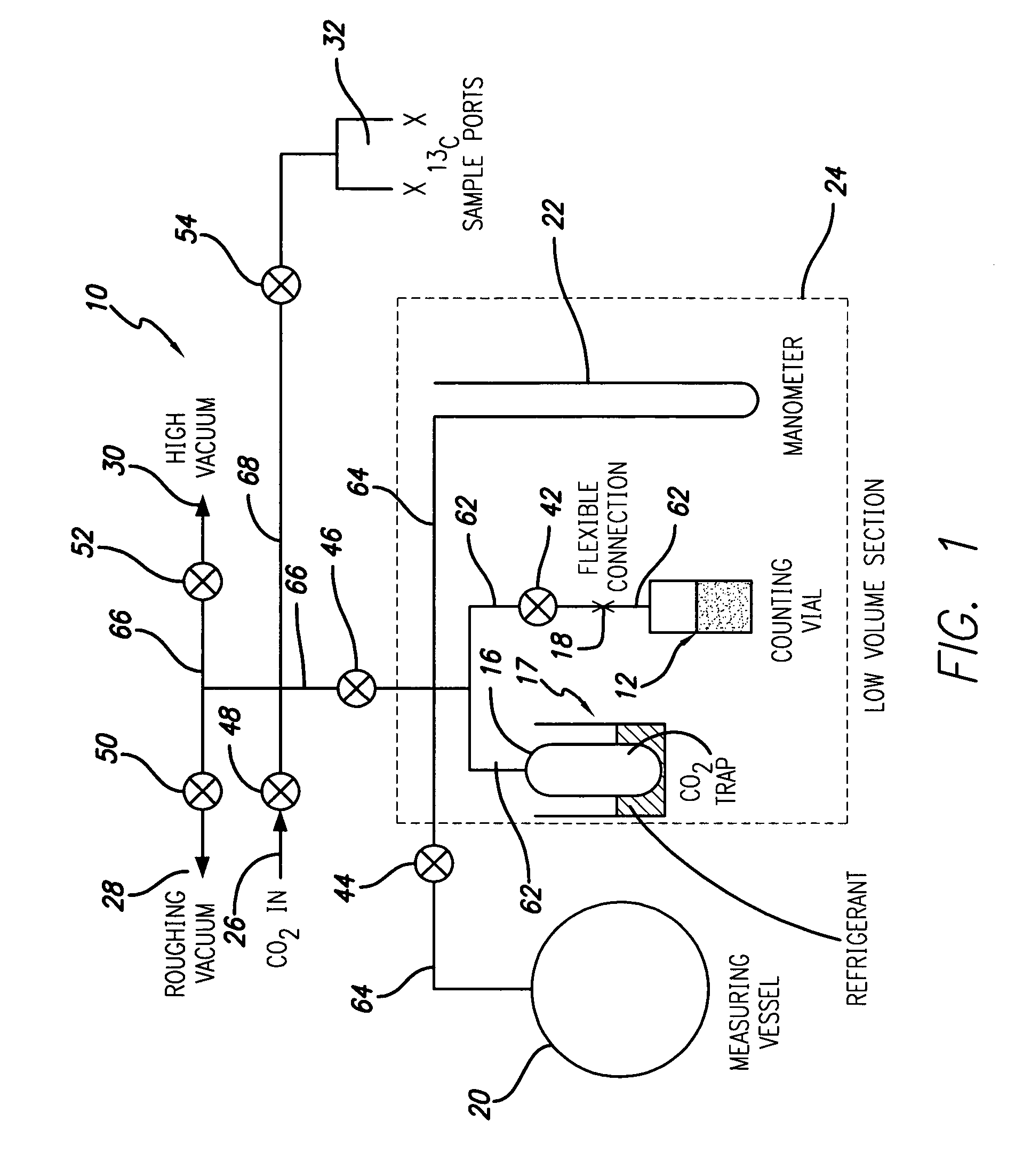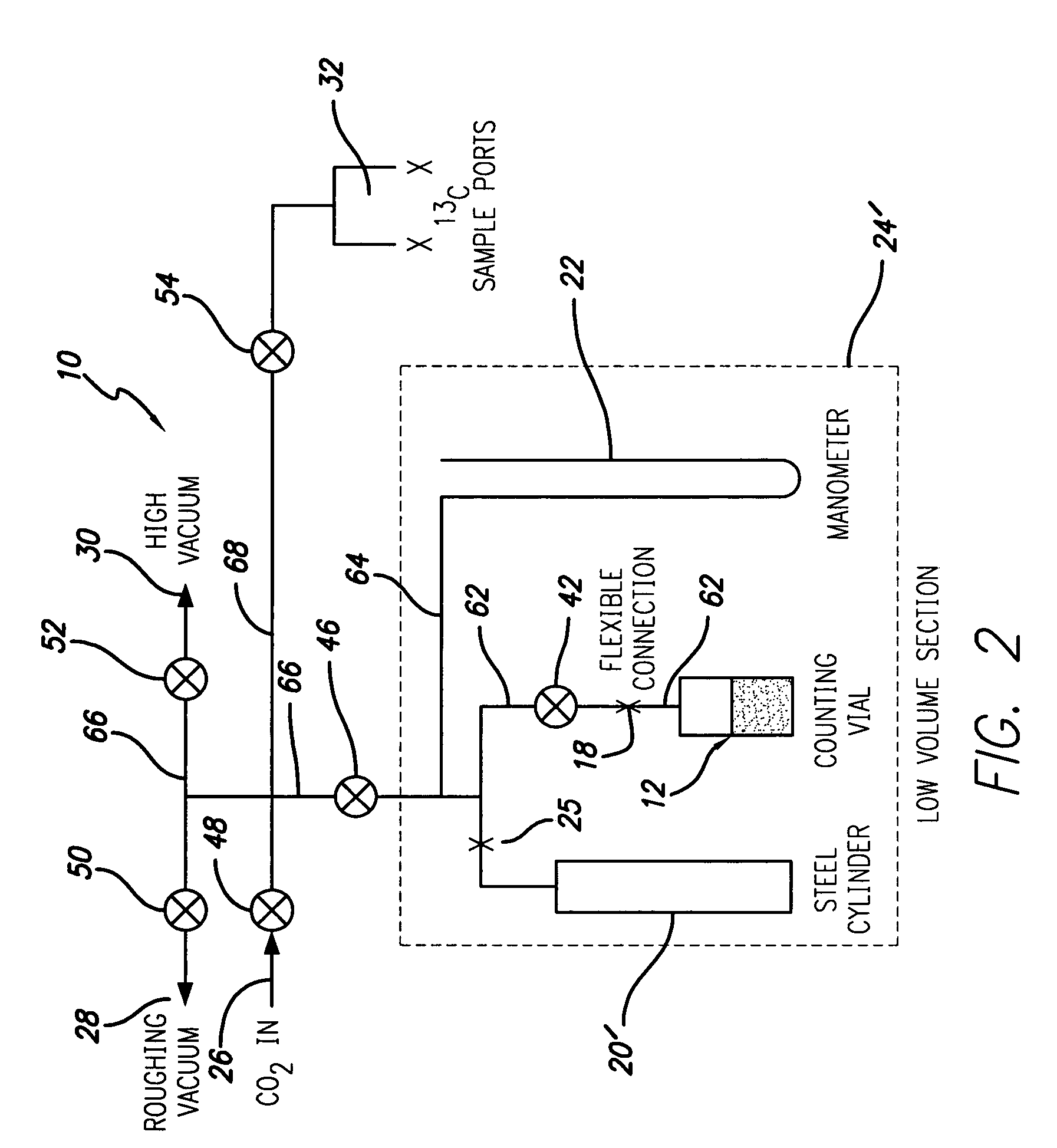Apparatus and method for preparing samples for radiocarbon dating
a radiocarbon dating and apparatus technology, applied in chemical methods analysis, withdrawing sample devices, material testing goods, etc., can solve the problems of cumbersome and laborious, relatively time-consuming and laborious preparation of samples for use with liquid scintillation equipment, and relatively expensive process, etc., to achieve simple, fast, reliable and accurate method
- Summary
- Abstract
- Description
- Claims
- Application Information
AI Technical Summary
Benefits of technology
Problems solved by technology
Method used
Image
Examples
Embodiment Construction
[0030]With reference to FIG. 1 an apparatus, generally referred to by the numeral 10, and method according to a preferred embodiment of the present invention, is described. In general terms, the apparatus is made up of a number of interconnected systems that include collection systems, storage systems, measuring systems, input systems, evacuation systems, and sampling systems. The different systems are interconnected by conduit lines, and isolatable from each other by a plurality of valves.
[0031]The terminal point of the apparatus 10 is a collection system preferably in the form of a vial 12 suitable for holding a liquid absorbent capable of absorbing amounts of gaseous CO2 introduced into the vial, and a scintillation cocktail. Preferably, the vial 12 is a standard 20 ml low-potassium glass liquid scintillation counting vial, with cap removed. It is pressed onto a vacuum-tight connection with the line 62 joining to the balance of the apparatus. A flexible joint 18, preferably a sho...
PUM
| Property | Measurement | Unit |
|---|---|---|
| total volume | aaaaa | aaaaa |
| pressure | aaaaa | aaaaa |
| pressure | aaaaa | aaaaa |
Abstract
Description
Claims
Application Information
 Login to View More
Login to View More - R&D
- Intellectual Property
- Life Sciences
- Materials
- Tech Scout
- Unparalleled Data Quality
- Higher Quality Content
- 60% Fewer Hallucinations
Browse by: Latest US Patents, China's latest patents, Technical Efficacy Thesaurus, Application Domain, Technology Topic, Popular Technical Reports.
© 2025 PatSnap. All rights reserved.Legal|Privacy policy|Modern Slavery Act Transparency Statement|Sitemap|About US| Contact US: help@patsnap.com



